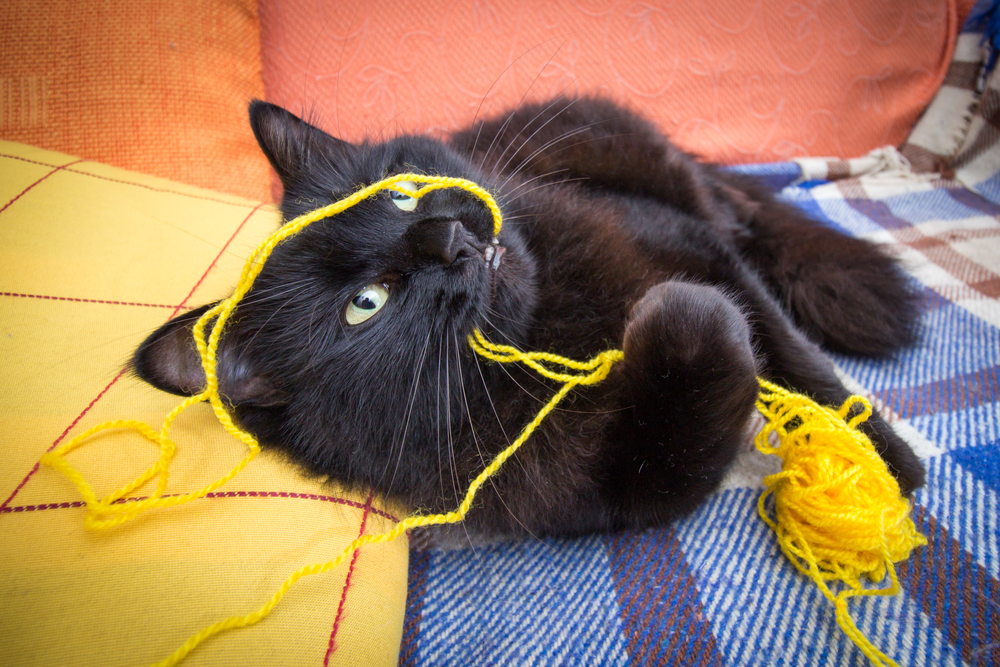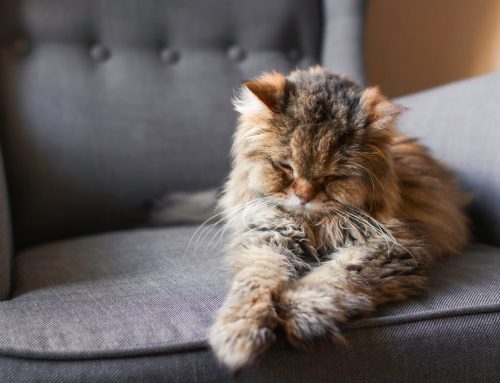Your pet’s inquisitive nature is probably one of their most endearing qualities, but it can also land them in a heap of trouble. Animals use their senses of smell and taste to explore their world, which means that something that looks interesting goes into their mouth and is often swallowed. While some items pass without issue, others cause problems, from toxicity to obstruction. Gastrointestinal (GI) foreign bodies are an all-too-common cause of severe illness and even death in pets.
Problems that result from GI foreign bodies in pets
A non-food item that your pet eats can cause a host of problems, including:
- Toxicity — If your pet eats a coin or other galvanized metal object (e.g., nut, bolt, or other hardware) that contains zinc, their stomach acid can slowly dissolve the metal, and zinc can be absorbed into their bloodstream. Zinc toxicity can cause red blood cell destruction and life-threatening anemia, as well as liver, kidney, and heart failure. Ingestion of a single zinc-containing penny that is not removed can be fatal. Lead-containing objects, such as fishing sinkers, drapery weights, and lead shot, can also cause toxicity. GI signs (e.g., vomiting, diarrhea, and decreased appetite) and neurologic signs (e.g., incoordination and seizures) can result, and can make your pet seriously ill.
- Intestinal obstruction — A large object that cannot pass through your pet’s GI tract may lodge in their stomach or intestines. Items that commonly cause intestinal obstructions include clothing (e.g., a sock, or piece of underwear), small children’s toys, and pet toys. A lodged object can prevent food from passing through and may perforate the intestinal wall. Contaminated GI contents can then leak into your pet’s abdominal cavity, and cause life-threatening peritonitis, an abdominal infection that is often fatal, if not treated immediately.
- Intestinal plication — Cats love to eat linear items, such as string, yarn, rope, tape, and Christmas tree tinsel. If one end becomes caught or tethered, such as around their tongue base, your cat’s intestines will bunch up, or plicate, around the string, and may perforate their intestinal wall.
Signs of GI foreign bodies in pets
If your pet develops an intestinal obstruction or plication, they can quickly become sick and will show clinical signs such as:
- Vomiting
- Diarrhea
- Lethargy
- Decreased appetite
- Dehydration
Most animals with an obstruction stop defecating, because they are not eating. If they do ingest any food, they vomit, because the food cannot move past the obstruction. Clinical signs in a pet who ingests a toxic item, such as a coin or lead sinker, will depend on the toxic compound the item contains.
If you know that your pet has eaten something they shouldn’t, bring them in for immediate evaluation, rather than wait for them to become sick. A foreign body diagnosed while in your pet’s stomach can often be removed without surgery.
Diagnosing GI foreign bodies in pets
If we suspect a GI foreign body in your pet, we will take X-rays to confirm the object’s presence and identify its location. Sometimes a contrast agent, such as barium, is used to identify foreign bodies. After your pet ingests the radio-opaque liquid, X-rays are taken over several hours to observe its movement through their GI tract. The liquid will not move past an obstruction. Barium can also help us identify foreign objects, such as clothing, that may not show up on X-rays, but that barium clings to. We may also perform blood work to assess your pet’s overall health status, as infection and life-threatening physiological imbalances can develop quickly if an obstruction or perforation occurs.
Treatment for pets with GI foreign bodies
Once a foreign body is identified, we will determine whether it must be removed, based on its size and composition. If the foreign body is in your pet’s stomach, an endoscope may be able to be used for removal, rather than abdominal surgery. If the foreign body has moved into your pet’s intestinal tract, however, surgery will be necessary.
Foreign body surgery involves incising a pet’s intestine near the object, removing the object through the incision, and suturing the intestinal wall to ensure a leak-proof seal. Linear foreign bodies often require several incisions to remove the entire string length. If the foreign body has perforated or damaged the intestine section where it is lodged, a resection and anastomosis may be performed, where the damaged portion is removed, and the ends sutured together.
After surgery, we will oversee your pet’s care while they recover from any infection and systemic effects the foreign body may have caused. Some pets may require several days of hospitalization with intravenous fluids and medications for recovery.
How can I prevent a GI foreign body in my pet?

The best way to prevent a GI foreign body is to keep your pet away from tempting items. Many pets don’t eat non-food items, but if you know your pet will gobble down anything that hits the floor, keep items they could eat safely out of reach. Follow these tips to prevent a catastrophe:
- Pet toys — Choose only toys that your pet cannot chew apart and eat.
- Children’s toys — Keep your pet safely confined in another room with a baby gate, crate, or closed door whenever children are playing with small toys.
- Storage — Ensure all toys are kept off the floor, and stored in pet-proof toy bins.
- Bones for pets — Never feed your dog bones or other treats that can be chewed into pieces and swallowed.
- Craft supplies — Keep all string, yarn, and other craft supplies stored out of your pet’s reach.
A GI foreign body can be a serious problem, but prompt veterinary attention can protect your four-legged friend. Contact our Boca Midtowne Animal Hospital team if your pet ingests something they shouldn’t.







Leave A Comment